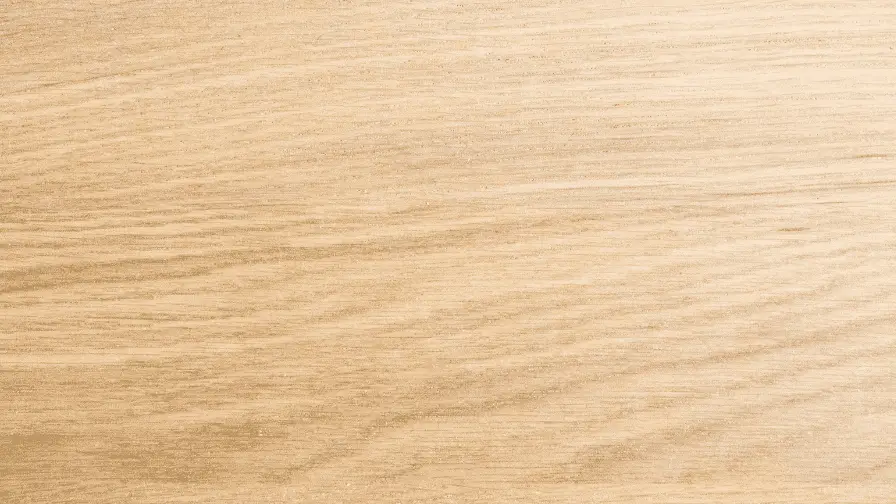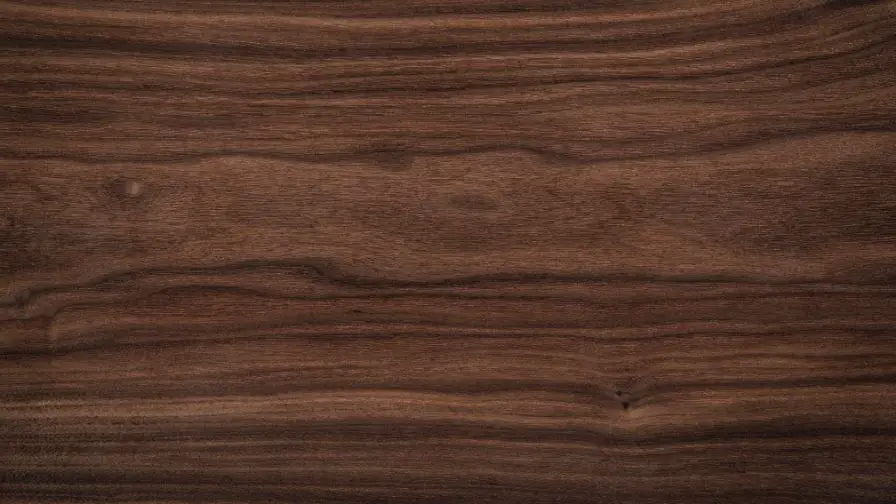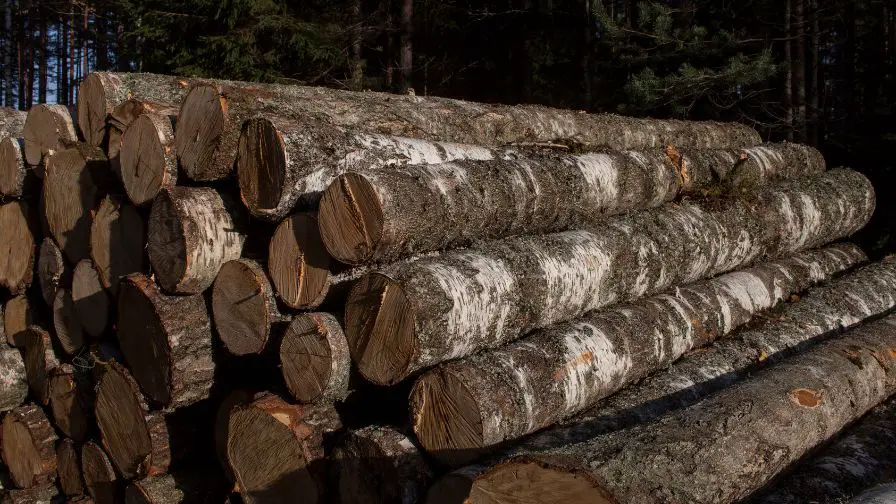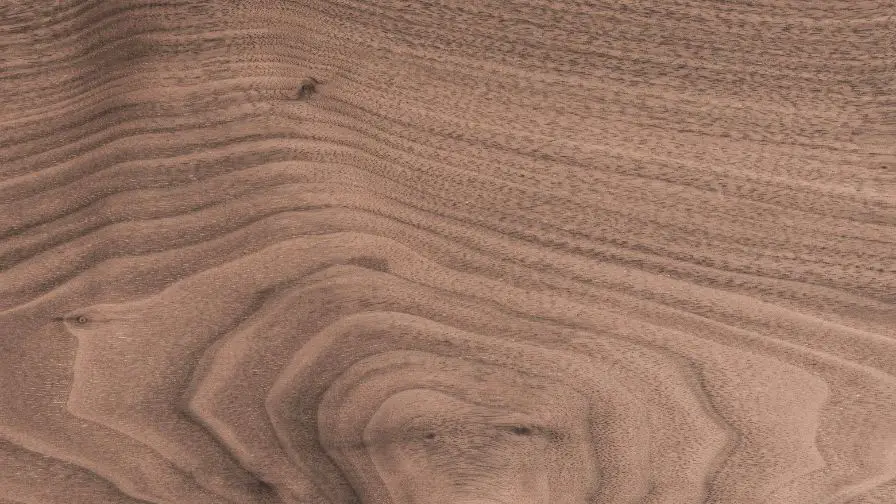
When it comes to woodworking, there are a lot of different options to choose from. Different woods have different properties, and each one is better suited for certain applications.
In this blog post, we will compare Birch vs Walnut – two of the most popular woods used in woodworking projects. We will discuss the pros and cons of each one, so you can decide which is the right choice for your project!
What Is Birch Wood?
Birch wood is a type of hardwood that is known for its light color and fine grain. It is often used in furniture and cabinetry because of its beauty and durability. Birch is also a popular wood for making floors, walls, and trim in homes.
Birch is a deciduous tree, which means it sheds its leaves every year. The trees can grow to be quite tall, up to 50 feet (15 meters) or more. They have smooth, gray bark that is sometimes used for making canoes and other objects.
Birch wood is strong and stiff, yet lightweight. It is also shock-resistant, which makes it a good choice for flooring and furniture. The wood has a fine grain that is uniform in appearance. It can be stained or painted, and it takes glue and nails well. They are characterized by thin, papery bark that can be easily peeled off in long strips.

What Is Walnut Wood?
Walnut wood is a type of hardwood that is typically used in the construction of furniture and cabinets. It is also a popular choice for floors and paneling. Walnut wood has a dark brown color with a straight grain pattern.
Walnut wood is available in two main types: black walnut and walnut. Black walnut is the more expensive of the two types.
Walnut wood is available in two different grades. Grade A walnut wood is the highest quality and is typically used in high-end furniture. Grade B walnut wood is of lower quality and is often used in lower-priced furniture or for construction purposes.
Walnut wood is a hardwood that is strong and durable. It is also resistant to warping and twisting. It is easy to work with and takes stain well.

BIRCH VS WALNUT
| CATEGORY | BIRCH WOOD | WALNUT WOOD |
| PRICE | The price of Birch wood varies depending on the quality of the lumber and can range from $6.99/board foot. You can order natural, high character and premium walnut boards. If you order in bulk you can get cheaper pricing. | The price of Walnut wood varies depending on the quality of the lumber and can range from $11.99-$20.99/board foot. You can order natural, high character and premium walnut boards. If you order in bulk you can get cheaper pricing. |
| JANKA HARDNESS | Birch Janka Hardness score is 1260 | Walnut Janka Hardness score is 1010 |
| DURABILITY | Birch is durable when it comes to withstanding wear and tear but is susceptible to insects. Walnut, on the other hand, is not as strong as birch and can suffer from dents and scratches more easily. | Walnut’s durability makes it ideal for furniture and cabinetry. |
| SPECIES | Birch is a tree of the genus Betula in the family Betulaceae. | Walnut species is called Juglans and it belongs to the Juglandaceae family. |
| TREE SIZE | Birch trees can reach up to 60 feet and 30″ in diameter, while walnut trees only grow to be around 40-50 feet. That extra height and girth means that a full-grown birch can provide more shade and produce more oxygen than a walnut tree of the same age. Birch tree leaves are also much larger than those of walnut trees, so they can intercept more sunlight, which helps to keep the ground beneath them cooler and reduces water evaporation. | Walnut trees are generally smaller, averaging between 20 and 60 feet tall with a spread of 50-75 feet. Walnut tree leaves are larger, darker green, and have a rough texture. Walnut trees have a more rounded canopy. |
| LOCATION | Birch tree are native to Europe, Asia, and North America. Mainly found throughout much of the cool temperate and boreal regions of the Earth. They are a popular tree for landscaping in North America. | Walnut trees are native to the Mediterranean region but are also grown in other parts of the world including North America, Europe, and Asia. Walnut trees prefer a temperate climate with well-drained soil. |
| COLOR | Birch wood is typically a pale cream color to a light reddish brown. Birch blossoms are white and appear in early spring. | Walnut wood is typically a chocolate brown color with darker streaks running through it. Walnut wood may also have a slightly purple hue to it. Walnut, on the other hand, has a more consistent color. It is usually a dark chocolate brown but can also be found in lighter shades. Walnut blossoms are greenish-yellow. |
| GRAIN | Birch wood grain is straight grained with a fine, even texture. It is also light in color with a hint of reddish brown hues. | Walnut wood grain is straight grained and pores are much larger and more spaced out. Walnut wood grain is more open with a looser feel and a rough texture. |
| END GRAIN | Birch End Grain is diffuse-porous, with medium to large pores arranged in radial multiples of two and three, and occasional large pores in what appear to be rows perpendicular to the grain. It also has a characteristic horizontal line figure on the quarter sawn face. Walnut is also diffuse-porous, but its pores are more uniform in size and spacing. | Walnut End Grain is smooth, with small, uniform pores arranged in a spiral pattern. Walnut on the other hand is a softer more open grained wood that will show knife marks more readily. Walnut also has a limited range of colors and grain patterns. |
| ROT RESISTANCE | Birch’s rot resistance is due to a naturally high concentration of phenolic compounds in the wood. These substances act as toxins to many fungi and bacteria, making them unable to grow or feed on the wood. | Walnut’s rot resistance is due to the chemical properties of juglone and its low density. Walnut is a relatively soft wood, and its low density makes it more difficult for decay-causing fungi to penetrate the wood. |
| SUSTAINABILITY | Birch trees can be harvested at a younger age than walnut trees, which makes them a more sustainable choice. Birch is also less likely to rot and decay, meaning that it can be used for a longer period of time. | Walnut trees can be harvested after reaching maturity between 40-60 years old. It is not as sustainable because it is a less common resource and takes longer to grow. |
| USES | Birch wood can be used for a variety of things. It’s commonly used in the construction of homes and furniture, as well as for flooring and paneling. Birch is also a popular wood for making cabinets, doors, and other millwork. | Walnut wood can be used for furniture, cabinetry, gunstocks, veneers, interior paneling, cutting boards, marquetry inlays, checkboards, flooring, millwork, desks, dining tables and butcher blocks. |
| RELATED SPECIES | Birch related species include the alder, hornbeam, and hazel. | Walnut related species are found mostly in the southern hemisphere but some grow in the northern hemisphere as well. There are about 30 related species of walnut including black walnut, butternut, and heartnut. walnuts are evergreen. |
BIRCH VS WALNUT: PROS & CONS
| BIRCH | WALNUT | |
| PROS | The pros of Birch wood are that it is very affordable, light in color with a fine grain. It takes stain evenly and is overall a good value for the price. | The pros of Walnut wood are that it is very strong and durable. Walnut is also a popular choice for furniture because it has a beautiful grain pattern. Walnut can be stained or painted to match any decor. |
| CONS | The cons of Birch wood are that because it is so light in color it can show scratches more easily than darker woods. | The cons of Walnut are that it is susceptible to scratches and dents. Walnut is also a bit more expensive than some other types of wood. |
What Are The Differences Between Hickory vs Walnut?
Here are the differences between Hickory and Walnut.
When it comes to hardness, hickory is in a league of its own. It’s about twice as hard as oak, which is one of the most popular choices for woodworking projects. Hickory is also very strong and dense. This makes it a great choice for things like flooring, furniture, and cabinetry. It’s also a popular choice for baseball bats and other sports equipment.
Walnut, on the other hand, is a softer wood. It’s not as strong or dense as hickory, but it does have a beautiful grain pattern. Walnut is a popular choice for woodworking projects like carving, furniture, and cabinetry. It’s also a popular choice for gun stocks and musical instruments.
Birch is best for:
-Flooring
-Furniture
-Paneling
If you’re looking for a wood that is strong and durable, yet still has a light and natural look, birch is the perfect choice. Here are three ways you can use birch in your home.

Walnut Wood Is Best For:
-Making high-quality furniture
-Creating beautiful floors
-Constructing cabinets and other storage solutions
If you’re looking for a wood that will give your home a luxurious look and feel, then walnut is the way to go. This type of wood is often used in high-end furniture and flooring, as it has a rich, dark color that really makes a statement.
It’s also perfect for constructing cabinets and other storage solutions, as it is both strong and stylish. So if you’re looking to add a touch of luxury to your home, then walnut wood is the way to go.

What Wood Is Similar To Birch?
Soft maple is similar to Birch in many ways. The two species are both hardwoods with a fine, even grain. They can be used interchangeably in most applications, though soft maple is generally less expensive.
Both Birch and soft maple are strong woods that take stain well and hold up over time. If you’re looking for a wood that will give your project a classic look, either of these species would be a good choice.
Is Birch An Expensive Wood?
Birch is not an expensive wood compared to other hardwoods. It is, however, more expensive than most softwoods. The cost of birch lumber varies depending on the grade and thickness of the lumber. The grades range from construction grade to select and better.
BIRCH – 5 Things you Didn’t Know About this Amazing Tree
Subscribe to StoneAgeMan on YouTube



